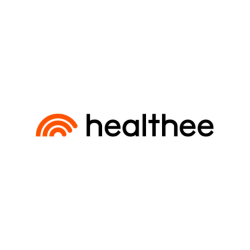As the term "virtual reality" comes closer to defining the year 2020, HR professionals will find the coronavirus has moved yet another thing online: open enrollment. The communication methods employers use to encourage workers to select benefits will need to follow suit. As DirectPath VP of Client Services Kim Buckey put it, "posters aren't going to cut it."
Like birthday parties and weddings, open enrollment education events have adapted to the virtual environment, said Buckey, whose company provides enrollment support services to employers and employees. DirectPath has noted a developing interest in virtual benefit fairs, for example. "You're not going to be able to set up something where people can meet with vendors, but you can certainly do that online," Buckey said.
Telephonic enrollment has also garnered more attention amid the pandemic. Employees can schedule an appointment to chat with a representative about an employer's benefits offerings and, in the same phone call, learn about their options and enroll on the spot.
Even as benefits education and enrollment mediums morph to the demands of COVID-19, HR professionals must clear the hurdles of informing employees they exist and convincing them to take action. Buckey offered three tips for practitioners heading into open enrollment season.
1. Start early. Communicate often.
If benefits professionals haven't initiated any open enrollment communications plans, they should start now, Buckey said. "Lay the groundwork. Remind people that enrollment is coming up."
Employees may welcome this information. The novel coronavirus has refreshed many employees' interest in their benefits, prompting workers to investigate the coverage they have and consider what they may want to change in the coming year, Buckey said.
While employees' attention lingers on benefits, employers can remind them to tend to benefits-related tasks. Workers need to check in with their primary caregivers, for example, to ensure they're still in business. "In some areas where there are primarily private practices, a lot of those practices have had to close because they lost so much income during the shutdown," Buckey said. "This is a good opportunity to think about where you're going to receive care going forward."
2. Bring communications into focus.
Open enrollment necessitates an overarching strategy. Employers ought to consider what they want to accomplish during the season, Buckey said. Employers may want to shift employees to a certain plan. They may want to increase participation in offerings such as health savings accounts. Or they may want to ensure workers looked into their options.
As employers deploy communications about open enrollment, they must ensure each message is crafted for a specific purpose and a specific audience. "Having a plan so you can target your communications is essential," Buckey said. "That way, you're not advertising student loan benefits to someone entering retirement."
Messaging should be brief. "Don't try and do all things with each communication. Have a reason for what you're sending out, and keep it short and simple," Buckey said. "No one these days, or even in the best of times, has time to go through a fifty-page document." Buckey suggested communications run no longer than half a page to a page. "That's about how much we can handle. Keep it engaging and visual."
Employers should make clear how the communications relate to employees. "Emphasize the 'what's in it for me,'" Buckey said. "If you can point out the value of an employee taking action, usually that translates into dollars."
3. Use a variety of employee-facing tools
"Meet employees where they are," Buckey suggested. The "overdone phrase" offers employers a useful open enrollment communication strategy, and one that's particularly applicable during a pandemic.
Employers can start by sending out mailers. "Get materials in front of other family members," Buckey said. Then go virtual. DirectPath serves clients who have used Facebook pages, Twitter chats and email campaigns to advertise benefits offerings. "There are so many tools out there that can be used," Buckey said. "There's no excuse for not taking advantage of these opportunities when these tools are so widespread."














